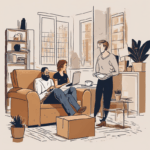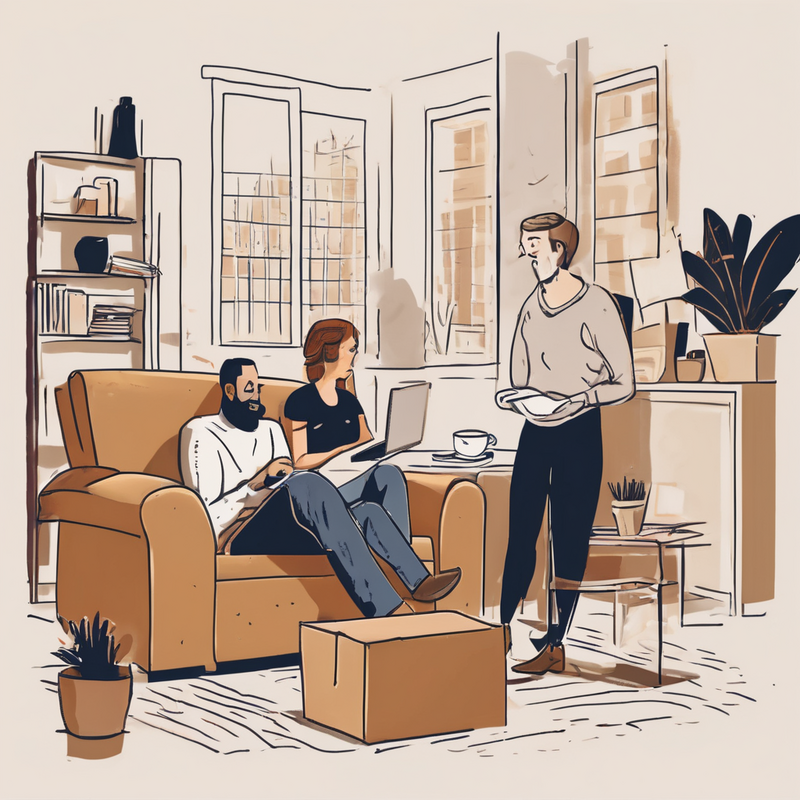Your New Sofa: The First Sign That Tariff Inflation is Hitting Home
That gleaming settee you just brought home might be more than just a stylish addition to your living room; it could well symbolize the onset of tariff inflation creeping into our everyday lives. As global trade policies shift and tariffs escalate, the persistent rise in costs for home furnishings has become painfully evident. Sofa prices, for instance, have surged dramatically, leaving consumers to brace themselves for the cascading effects of international economics on their furniture shopping habits. 🛋️💸
According to data from the Bureau of Labor Statistics, the price for upholstered furniture has increased by over 20% since 2020. This sharp spike tells a compelling story about the interplay between international trade policies and the average American household. With the Biden administration’s tariffs on numerous imports from China still in effect, American consumers find themselves at the receiving end of these economic pressures, leading to inflated prices for goods that were once more affordable.
Understanding the Tariff Chain Reaction
To grasp the phenomenon fully, one must first understand how tariffs operate. When a government imposes tariffs on imported goods, these additional fees are often passed down the supply chain, influencing production costs. For instance, if a company importing furniture components is slapped with a 25% tariff, it cannot absorb these costs indefinitely. As such, consumers typically see the result in their final bill.
This economic principle has become particularly pronounced in the furniture industry. Tariff hikes on raw materials such as steel and wood, coupled with container shortages arising from the pandemic, have prompted a perfect storm that drives up the overall price of finished products. For many, purchasing a new sofa means facing prices that are not just slightly elevated, but shockingly higher than anticipated. 📈
What Consumers Can Expect
Several factors point towards an ongoing trend in higher prices. A report from the American Furniture Manufacturers Association indicated that over 76% of manufacturers had raised their prices at least once between 2021 and 2023. This trend is alarming as it directly impacts consumer behavior, forcing many to forgo purchases, downsize, or seek out second-hand options.
“Many people are now experiencing ‘sticker shock’ when they go furniture shopping. It’s a wake-up call that tariff inflation is a tangible factor affecting household budgets,” notes Dr. Linda Kauffman, an economist analyzing consumer spending trends. 📊
Living Room Economics and Consumer Choices
The ramifications of rising costs reach far beyond just sofas. Households across America are recalibrating their purchasing power. According to recent surveys, nearly 40% of consumers are now opting for financing arrangements or buy-now-pay-later options as they wrestle with these inflated costs. 🆕💳 This makes higher-end products accessible but raises questions about long-term financial health.
Consumers are also pivoting towards multipurpose furniture as a cost-effective alternative. With many working from home, items that bridge the gap between productivity and leisure have skyrocketed in popularity. “It’s less about what’s fancy and more about what’s functional and affordable,” one furniture store manager noted. “People want something that can serve as a sofa by day and a guest bed by night.” 🛏️
How Long Will This Last?
The future remains uncertain. While there have been discussions around alleviating some tariffs, many analysts suggest that it’s unlikely for prices to return to pre-pandemic lows any time soon. Economic indicators, including inflation and supply chain disruptions, continue to collide, leading many experts to predict sustained inflation in consumer goods for the foreseeable future.
Can Consumers Fight Back?
For those grappling with rising prices, here are thoughtful approaches to navigate the shifting landscape:
- Research and Shop Smart: Understanding pricing trends by comparing similar models or seeking sales can save consumers significant amounts.
- Consider Timeliness: Waiting for off-peak season sales or holiday events can yield better pricing.
- Choose Quality Over Quantity: Investing in durable furniture that lasts longer may prove more cost-effective in the long run.
- Embrace Second-Hand Markets: Thrift stores, estate sales, and even online marketplaces like Facebook Marketplace or Craigslist can offer great deals.
In conclusion, the sharp uptick in sofa prices acts not just as an isolated incident but as a reflection of broader economic strategies and challenges. The once straightforward act of buying a new sofa is now imbued with implications of global trade policies and household economics, reminding us that our consumption choices are far from trivial. 🛒🌍












I dont buy it! Tariffs on sofas? Why not just start making our own, DIY style? Whos with me? #SofaRevolution
I cant believe were talking about sofa prices and tariffs! Maybe we should all just sit on the floor and protest.
I dont buy it! Tariffs are just an excuse for sofa companies to hike prices. Its a conspiracy, I tell you! 🤨
I dont buy it! Tariffs are just an excuse for companies to hike up prices. Sofa inflation is a scam!
I think tariffs on sofas are ridiculous! Who knew a simple piece of furniture could cause such heated debates? #SofaTariffDrama
I think we should start a sofa revolution and boycott tariffs altogether! Whos in for a living room economic rebellion?
I think instead of complaining about sofa prices, we should learn how to make our own furniture from scratch! Whos with me? 🛋️🔨
I dont buy it. Tariff inflation on sofas? Sounds like a made-up excuse for retailers to hike prices. Show me the facts!